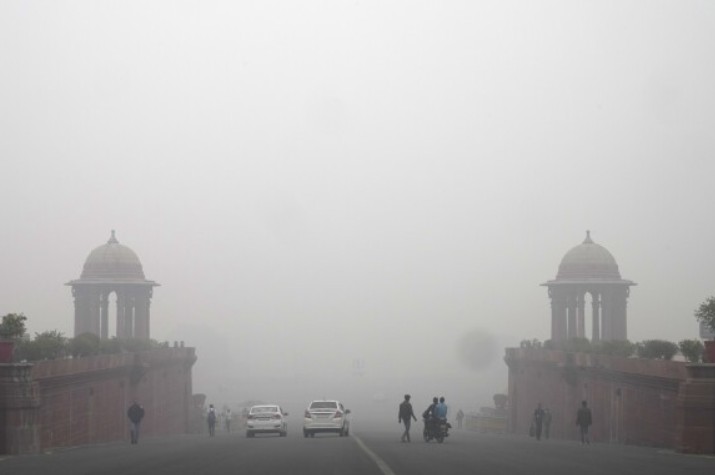Delhi Chokes- AQI above 300, Urgent Steps to Tackle Severe Air Pollution
Delhi Chokes- AQI above 300, Urgent Steps to Tackle Severe Air Pollution
Delhi faces a serious challenge with air quality, recently hitting an alarming Air Quality Index (AQI) of 348. This level of pollution severely impacts health, economy, and overall quality of life. Immediate action is necessary to address this pressing crisis and protect the people of Delhi.
The Grim Reality: Current AQI Levels and Health Impacts
An AQI of 348 falls into the “hazardous” category, indicating that health warnings of emergency conditions are needed. Everyone, especially vulnerable groups like children, the elderly, and those with pre-existing health issues, faces severe health risks. Breathing becomes difficult, and long-term exposure can lead to chronic respiratory diseases and cardiovascular issues.
A National Emergency: The Socioeconomic Burden of Air Pollution
Severe air pollution does not just harm individuals; it bears a heavy economic cost. Health care expenses rise, worker productivity decreases, and outdoor activities decline. The burden often falls on lower-income families, who are less equipped to cope with both health impacts and costs related to air quality.
The Urgency for Action: A Call to Immediate Solutions
Based on current conditions, we must take urgent steps to combat air pollution. Citizens, organizations, and the government must collaborate to develop effective strategies.
Understanding the Sources of Delhi’s Air Pollution
Vehicular Emissions: The Dominant Contributor
Over 10 million vehicles ply the roads in Delhi, contributing significantly to pollution levels. Statistics show that transport accounts for nearly 30% of total air pollution. Cities like London and Delhi have shown that implementing stricter emission controls can lead to noticeable improvements.
Industrial Emissions and Construction Dust: Significant Factors
Industrial activity, along with dust from construction sites, plays a crucial role in deteriorating air quality. Factories emit harmful pollutants, which increase respiratory illnesses in surrounding areas. High-profile projects like the Delhi-Mumbai Expressway further amplify dust pollution without adequate regulations in place.
Seasonal Factors and Agricultural Burning: Exacerbating the Problem
Pollution levels vary seasonally, often peaking in winter due to weather conditions that trap pollutants. Studies suggest that stubble burning can cause spikes in AQI by as much as 50%.
Immediate Actions to Reduce Exposure: Masks, Air Purifiers, and Stay Indoors
- Wear N95 Masks: These masks can filter out harmful particles. They are available at pharmacies and are effective for day-to-day use when stepping outside.
- Invest in Air Purifiers: Use indoor air purifiers equipped with HEPA filters to improve air quality at home.
- Minimize Outdoor Activities: Stay indoors during high pollution days and limit outdoor exercise.
Long-Term Health Strategies: Consultations and Preventative Measures
- Regular Health Checkups: Monitor lung health through routine checkups with healthcare providers.
- Lifestyle Changes: Incorporate foods rich in antioxidants and maintain a healthy diet to boost overall health.
Policy Interventions: Strengthening Emission Norms and Enforcement
Stricter emission norms can reduce pollution levels significantly. Cities like Beijing have successfully reduced vehicle emissions through rigorous policies. Strong enforcement strategies, such as regular vehicle inspections, can ensure compliance.
Public Awareness and Citizen Engagement: The Role of Collective Action
Public campaigns to raise awareness about pollution sources have seen success in cities around the world. Citizen-led initiatives, such as tree planting and community clean-ups, can engage residents and foster a sense of responsibility.
Investing in Public Transportation and Green Infrastructure
Improving public transport systems can help reduce the number of vehicles on the road. Data shows that cities with reliable public transport see a significant drop in air pollution levels. Projects like dedicated bus lanes and expanded metro systems are essential.
Exploring Renewable Energy Sources and Cleaner Technologies
The adoption of renewable energy sources, such as solar and wind, can drastically lower emissions. Delhi has made strides in this area, but there is still potential for much more. Innovative technologies, like electric vehicles and cleaner industrial practices, are also critical.
Looking Ahead: Sustainable Solutions for a Cleaner Delhi
The Path Towards Sustainable Urban Development
Sustainable urban planning, such as mixed-use development and green spaces, can improve air quality and the overall living environment. Investments in these areas not only tackle pollution but also enhance community well-being.
International Collaboration and Knowledge Sharing
Collaborating with global cities that excel in air quality management can yield useful insights. Sharing knowledge about successful initiatives fosters innovation that can help Delhi combat its pollution crisis.
Also Read-
Free Fire vs. Free Fire Max 2025 Understanding the Key Differences
